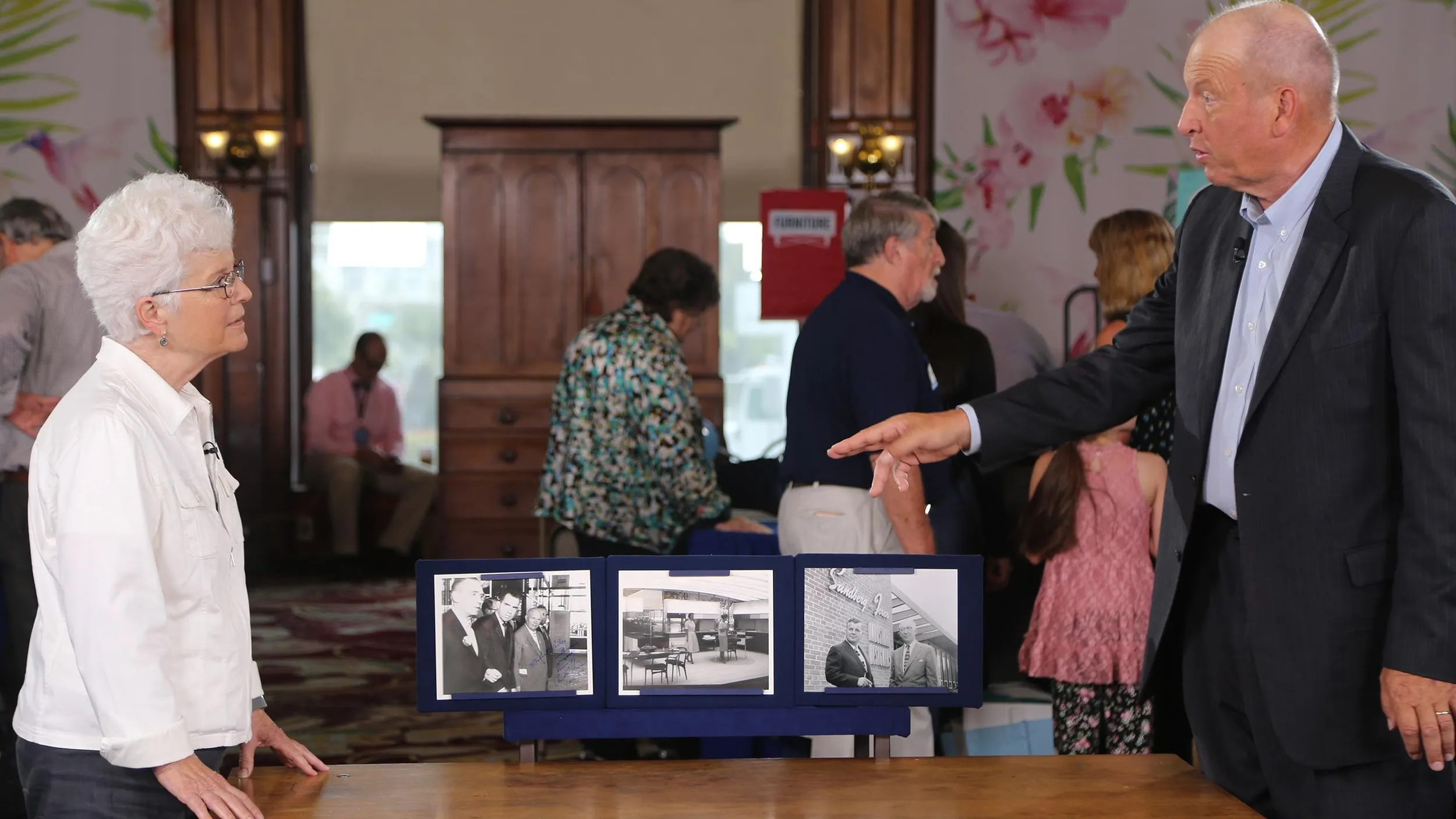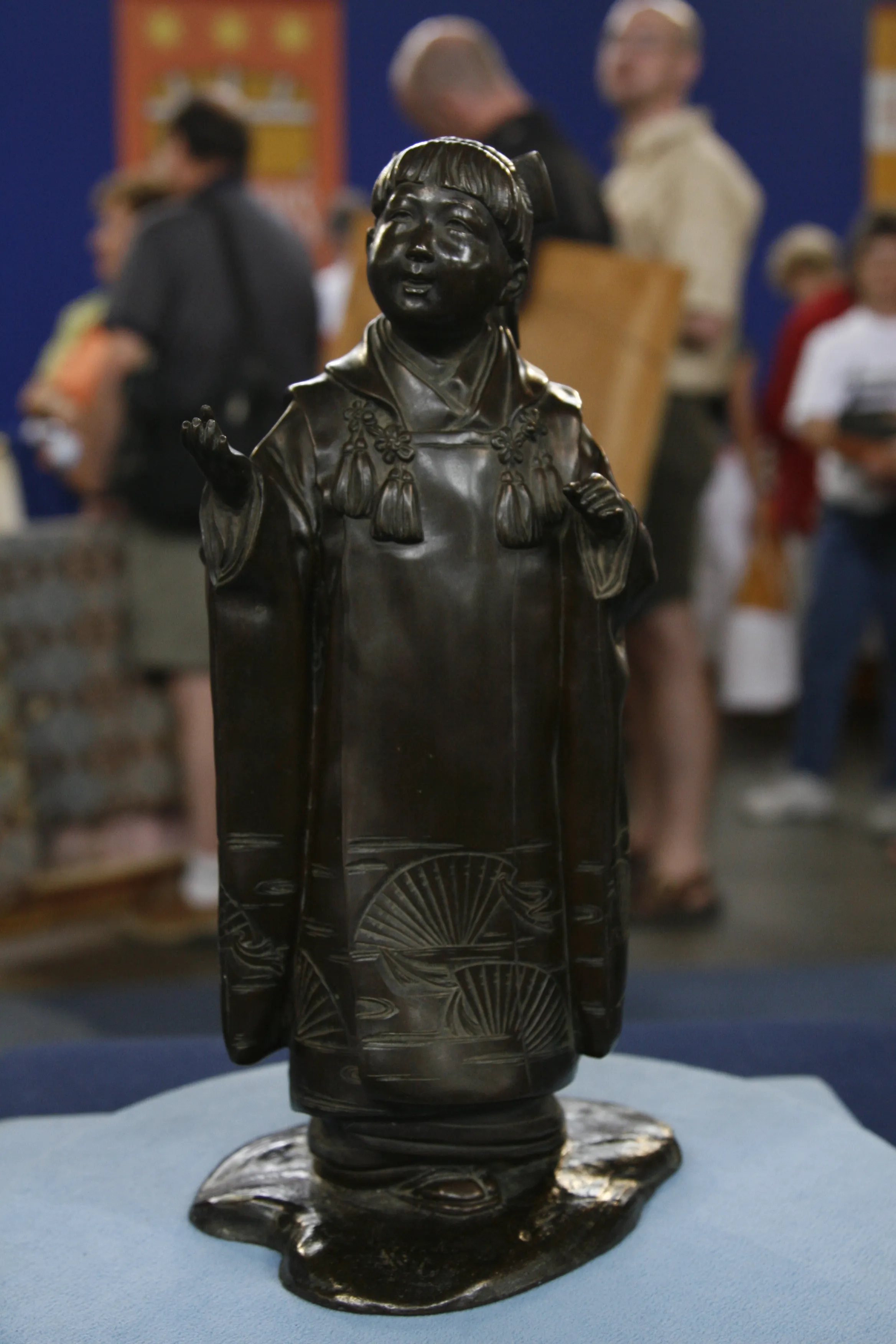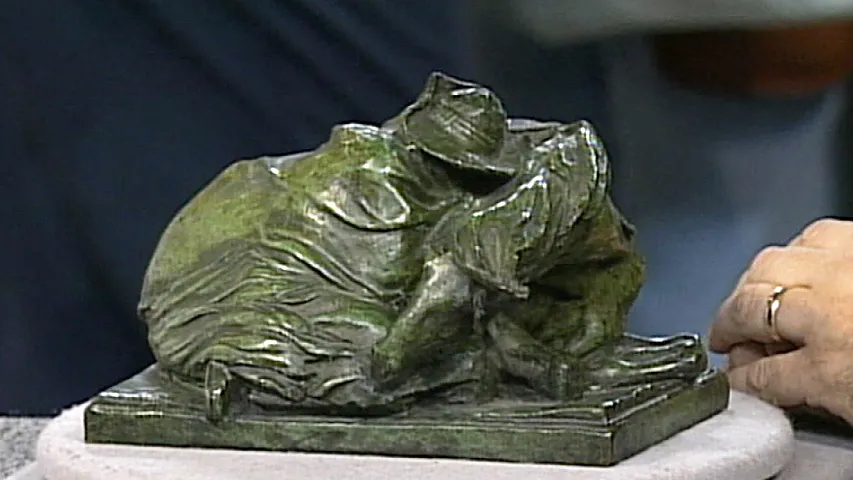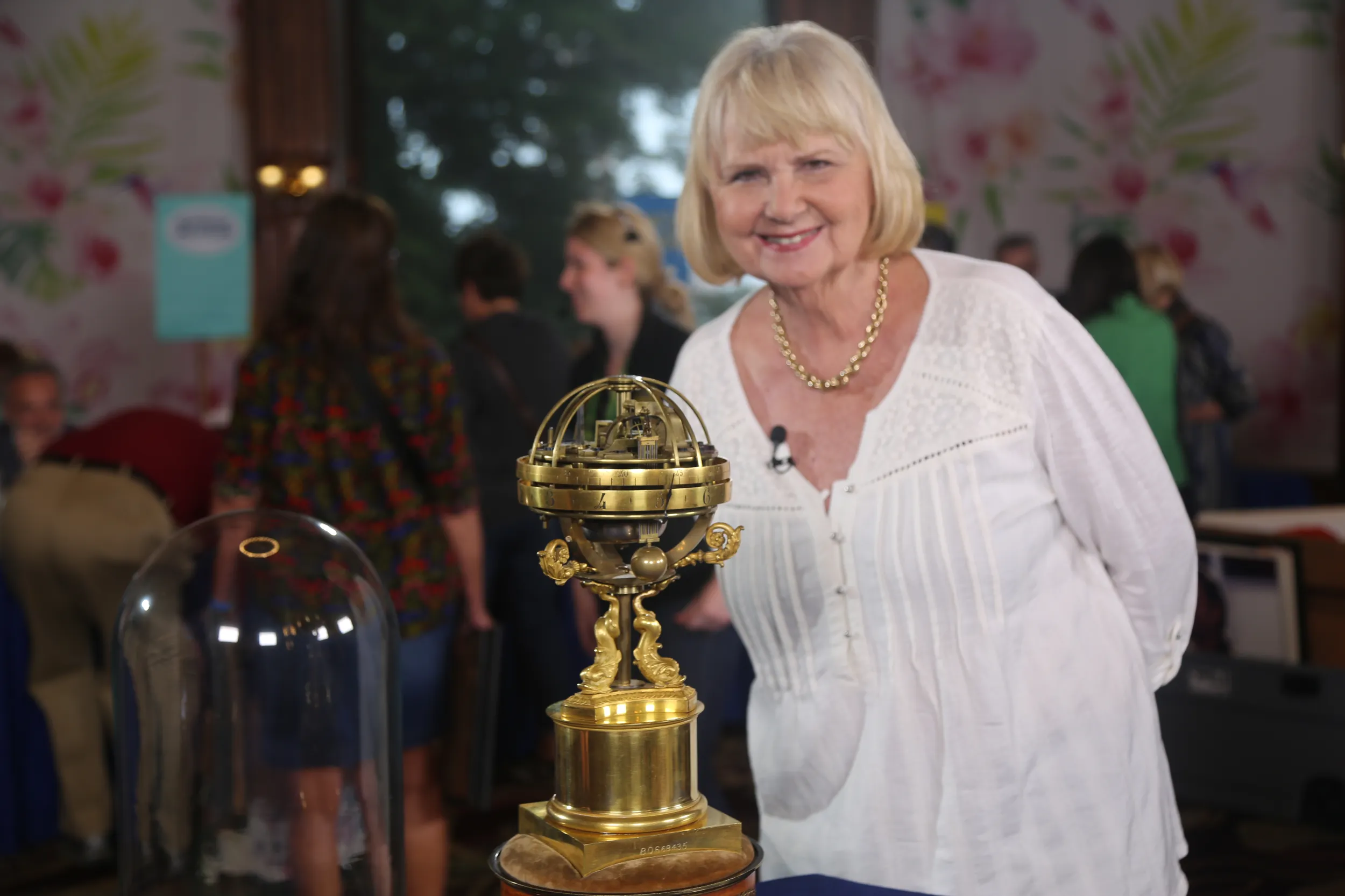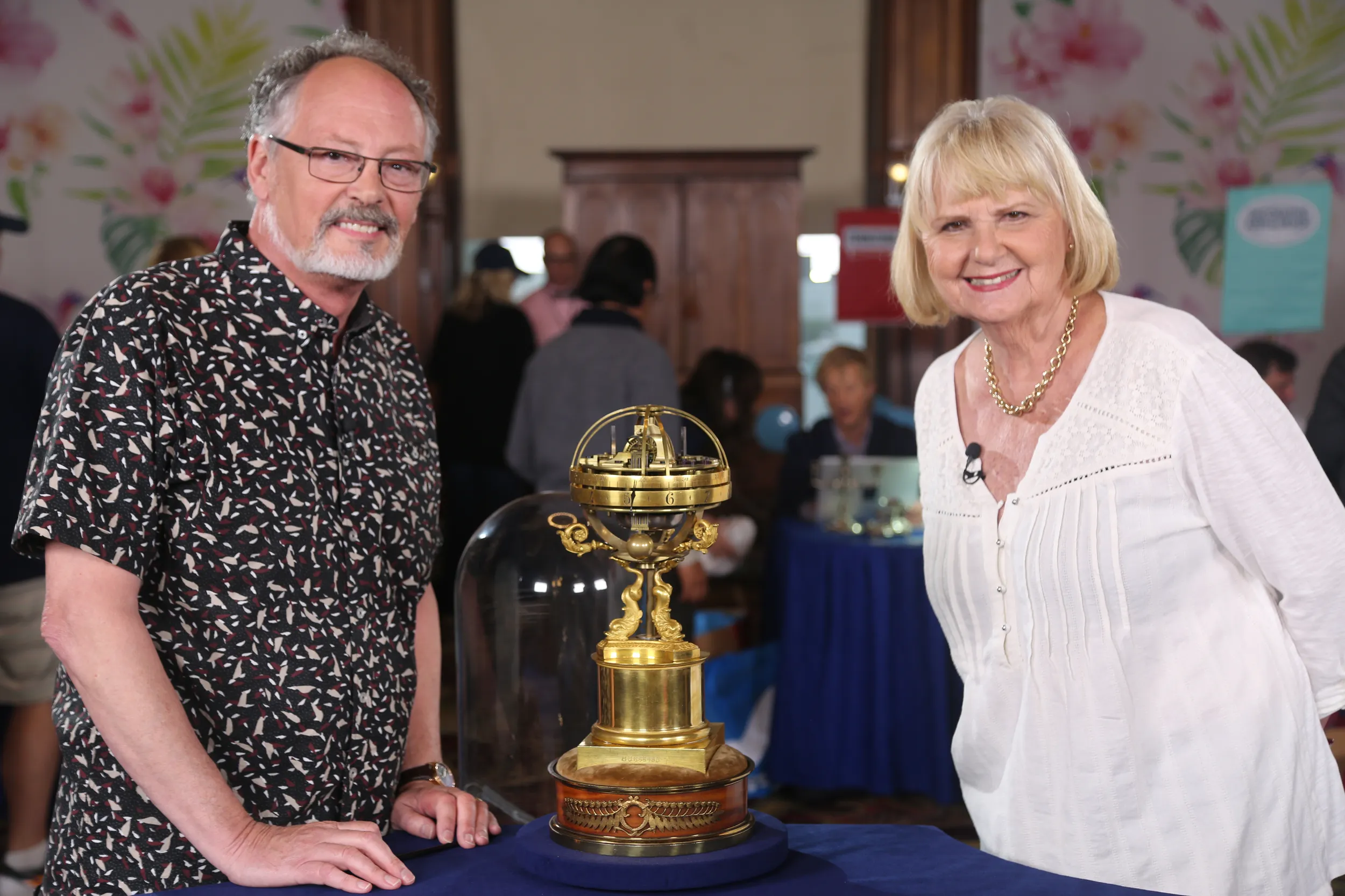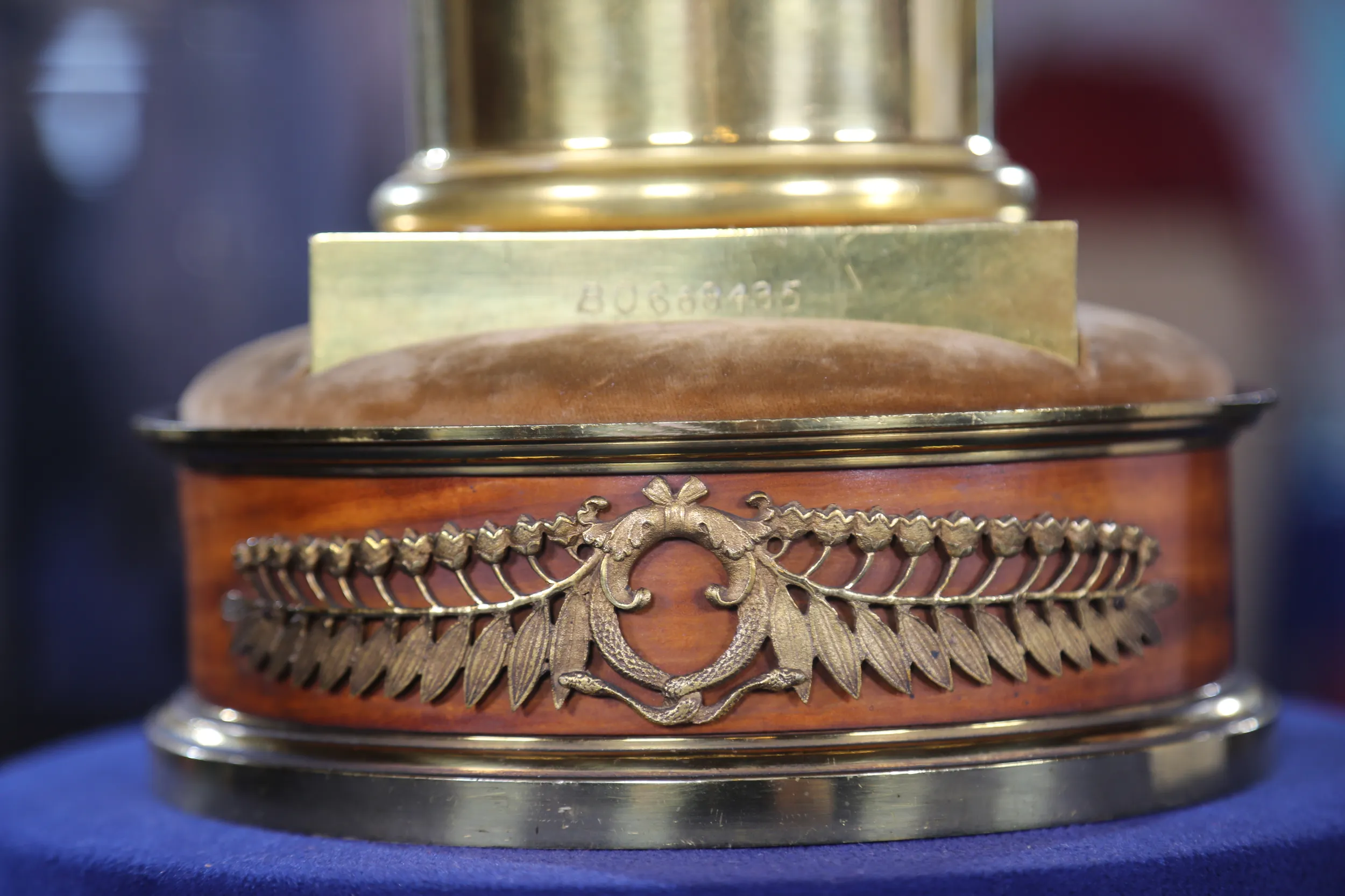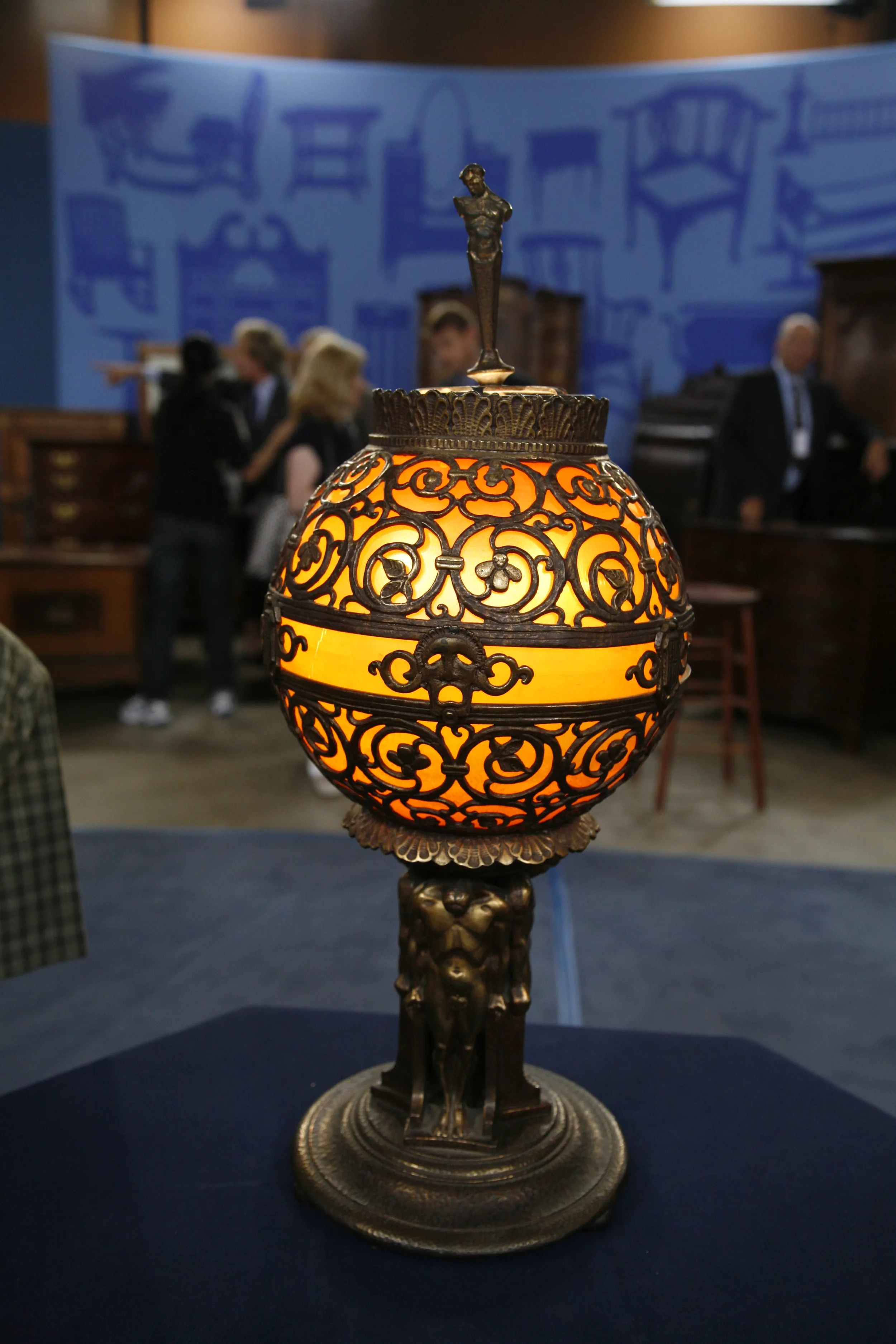WOMAN: Well, this clock was given to my grandfather, who was from Denmark, and he was the first violinist at the Royal Opera for 43 years.
APPRAISER: Ah.
GUEST: And after he had been there for 25 years, he got this beautiful clock from the orchestra at the Royal Opera as an anniversary present. And then when he passed away, my mother, who also was an opera singer at the Royal Opera in Copenhagen, she inherited the clock.
APPRAISER: I see.
GUEST: And she just passed away in December at 101. And now we have inherited the clock.
APPRAISER: So what year would you imagine it was when he received the clock as a gift?
GUEST: In 1939.
APPRAISER: Oh, wow. In order to show you some of the features, I'm going to lift the dome off.
GUEST: Okay.
APPRAISER: And set it over to one side.
GUEST: All right.
APPRAISER: It's what we call an annular ring clock.
GUEST: Okay.
APPRAISER: So where we're used to having clocks with a minute hand and an hour hand, this clock has no hands at all.
GUEST: Right.
APPRAISER: In place of the hands, it has these rings. And specifically, this ring is the hour ring. So this makes one revolution every 12 hours.
GUEST: Oh, yeah?
APPRAISER: And this is the minute ring, and this ring makes a complete revolution every hour. So it's comparable to the hands on a clock.
GUEST: Right.
APPRAISER: But in this case, the hand doesn't move. This hand remains stationary. And so you read the time as these rings pass the stationary hand, so to speak.
GUEST: Ah.
APPRAISER: It's not a particularly rare clock, but they're unusual. You're not going to pick up the phone and order one anytime soon.
GUEST: Right.
APPRAISER: It's very special.
GUEST: Yeah.
APPRAISER: Now, another thing that makes this very, very special is who made it. His last name was Lepaute. He was born in 1720 and died in 1789 in Paris. He didn't make ordinary clocks. He made clocks for kings and queens. It has a wonderful satinwood base with this decorative band here. The base is gilded bronze, and then it features these wonderful dolphins that support the clock itself. It happens to have the cutest little gridiron pendulum that you see right here. It's a wonderful clock. It's easily the most unusual clock that we've seen here today in San Diego.
GUEST: Really?
APPRAISER: Yes.
GUEST: Yeah.
APPRAISER: Very special. So the largest condition issue it has is, it's missing its cap.
GUEST: Oh!
APPRAISER: There was a gilded brass cap that went over top of this, to make it look like a sphere.
GUEST: Oh.
APPRAISER: And it's probably been gone a long time, because you never saw it.
GUEST: No.
APPRAISER: But right here is a threaded hole that would have held the dome down.
GUEST: Oh.
APPRAISER: So that's a pretty serious issue.
GUEST: Oh, yeah.
APPRAISER: As far as value is concerned.
GUEST: Yeah, we have never seen it.
APPRAISER: Now, lucky it lives under a glass dome.
GUEST: Right.
APPRAISER: So the works aren't affected by the dust.
GUEST: All right.
APPRAISER: But in the ideal world, it would have its gilded bronze cap.
GUEST: Oh! That's too bad.
APPRAISER: Yeah, yeah. Well, it is what it is.
GUEST: Yes, of course.
APPRAISER: Now, as far as value is concerned, in its present condition, my colleagues and I have decided that it's worth $10,000 in a retail setting.
GUEST: Wow.
APPRAISER: That's a lot of money.
GUEST: (laughing) That is a lot... That is a lot of money.
APPRAISER: Now, if it still had, if it still had its brass cap, it would be $15,000.
GUEST: Wow, that's amazing.
APPRAISER: But...

